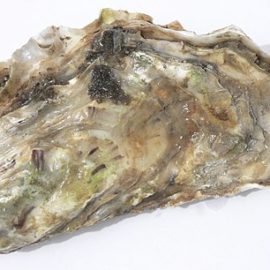
I have posted two articles on oysters. The first noted deaths in the oyster population. The second noted a ban being placed on oyster harvesting. Based on these articles I made some generalized comments. I have received comments, greatly appreciated comments, from Andrew Wilson who is currently involved in oyster litigation and so cant go on record.
I first said that the die off and new reefs were close to each other. Andrew said that specifically the new reefs are on the east side of the river and the die offs on the west. He also offered this background that I found interesting:
You might want to make clear that the new sanctuary reefs are not a response to the die-off. They are unrelated.
The big problem with the public seed grounds was that the oyster leaseholders keep taking too much cultch from the seed grounds to put on their own leases. If there is no cultch the oysters can’t grow and what few oysters do grow there, these are harvested soon after the season opens. It’s a classic “Tragedy of the Commons.”
So the new sanctuary reefs are intended to show that with proper cultching, the oysters will grow and provide for a sustainable yield if not overharvested. This was already shown in the Biloxi Marsh early NRDA project. LDWF created huge reefs which were doing great but the Oyster Industry Task Force demanded the right to harvest them. So LDWF let them and they descended like locusts. Nothing was left not even the cultch. So this time, LDWF is not going to let this happen. If the reefs get big enough, the spat released into the water column will migrate to other areas including private leases, so even without harvesting they still provide a benefit. They also create an ecosystem with lots of redfish so the oyster fisherman were griping that that is the actual purpose of the new reefs. Actually I believe LDWF is creating some reefs in Lake Pontchartrain purely for recreational fishing. LDWF is also experimenting with remote setting of spat on shell. Those little guys are already attached to the cultch so they get a “jump start.”
As to the cause of the recent die-off, my understanding is that the tissue samples were negative for toxic chemicals or oil. So a natural event is suspected particularly because of the low oxygen detected. A biologist I spoke to said it was a confluence of “natural’ events (climate change could still be a factor). Extreme wind driven low tides caused by strong northerly fronts freshened the inshore waters and also brought cold temperatures which causes the oysters to go into hibernation mode. Shortly after extremely strong south winds occurred which brought unseasonably high temperatures, extreme high tides and Gulf seawater with salinities pushing 30 ppt. levels. This caused the older, harvestable oyster to go into electrolytic shock and die. The warm temperatures also caused alga blooms and when they died the bacteria started eating them and in doing so used up all the oxygen which killed more oysters. Many of the spat and seed oysters survived however.
What this goes to say is that I invite comments and, as in this case, I learned a lot.



